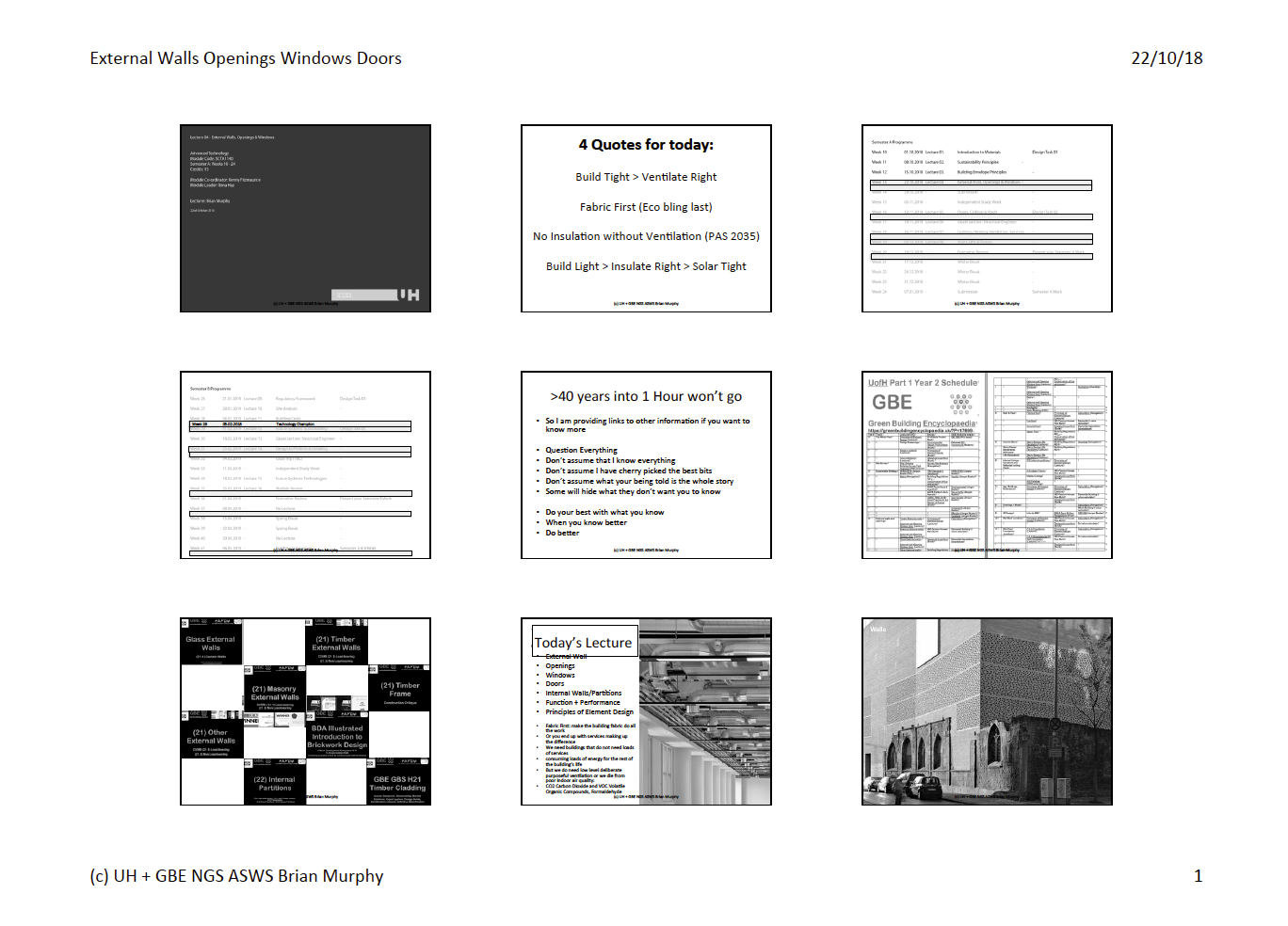
External Walls Openings Windows Doors Lecture
GBE > Encyclopaedia > Files > Lectures > Courses > Topical > G#19226
External Walls Openings Windows Doors Lecture
About:
- File Name: GBE Lecture Wall Opening Window Door
- File Type:
- PPTX
- File Size:
- PDF Handout: 4 Mb (9H8)
- PDF Show: 22.4 Mb (S67)
- PPTX Show: 29.3 Mb
- Number of Slides: 67
- Scope: Performance of External Walls, Openings, Windows, Doors, Internal partitions
- Extract: none, See Full text below
- Content: Extracts from POED, Principles of Element Design
- Created for: RIBA Part 1 Year 2 Architecture & Interior Design Students
- Presented to: UH University Hatfield
- Author: UH original embellished by BrianSpecMan aka Brian Murphy BSc Dip Arch (Hons+Dist)
- © GBE NGS ASWS 2017 – 2018
- Created: 16/10/2018
- Revision: A02
- Updated: 22/10/2018
- Previously published on Scribd: Not Applicable,
- Scribd reads: Not applicable
- CI/SfB: (NN)
- CAWS 1987: LNN
- CAWS 2012: NN:NN:NN
- Uniclass 1 1997: LNNNN
- Uniclass 2 2012:
- Uniclass 3 2015:
- Tags: External Walls, Doors, Windows, Performance, Principles, Fault finding
- ProductSets: Methods of Construction, Facade, Materials, Building Elements,
- UserGroups: Students, Architects, Assistants, Technicians, Structural Engineers, Constructors
© GBE NGS ASWS Brian Murphy aka BrianSpecMan *
24th October 2018 – 22nd November 2019
External Walls Openings Windows Doors Lecture
Images:
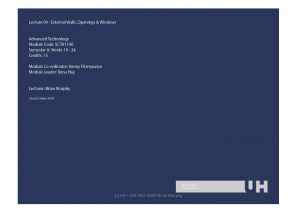
GBE Lecture WallOpeningWindowDoor A02 BRM 221018 S1 Show Cover PDF
Cover Slide
Content Slide

GBE Lecture WallOpeningWindowDoor A02 BRM 221018 9H1 PDF Handout Cover
Handout Cover
- GBE Lecture WallOpeningWindowDoor A02 BRM 221018 9H8 Handout PDF
- GBE Lecture WallOpeningWindowDoor A02 BRM 221018 S67 Show PDF
- GBE Lecture WallOpeningWindowDoor A02 BRM 221018 PPTX Show
Documents
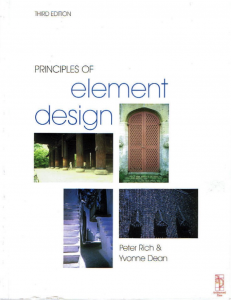
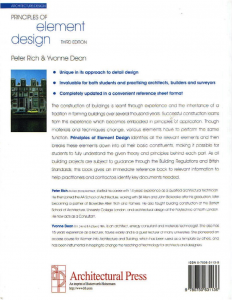
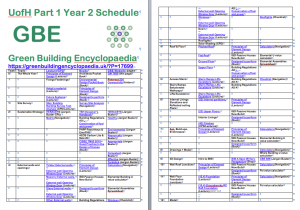
UofH Part 1 Year 2 Schedule A03 BRM 201018 PNG
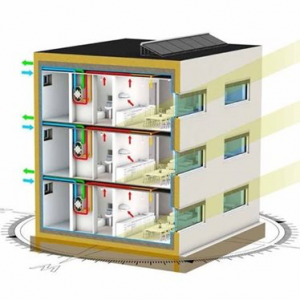
Cover Image TM60 CIBSE
© GBE NGS ASWS Brian Murphy aka BrianSpecMan *
24th October 2018
External Walls Openings Windows Doors Lecture
See Also:
GBE Lectures
- Subjects
- GBE Lectures Subjects G#715 N#737
- GBE Lectures G#480 N#486
- GBE Lectures Satisfied Customers
RIBA Part 1 Year 2 (2018/2019)
- UH Part 1 Year 2 Task Schedule (Course) G#17699
- S1 Adopt A Material (Studio Lecture) G#19183 2018-2020
- L1 Building Envelope Principles (Lecture) G#31815 2019/20
- L2 Introduction to Materials (Lecture) G#31821
- L4 External Walls, Openings Windows Doors (Lecture) G#19226 2018/19 (this page)
- L5 Floors Ceilings Partitions (Lecture) G#31829 2019/2020
- L6 Future Systems: Services (Lecture) G#31831
- L9 Future Systems: Sustainability (Lecture) G#20396
- L14 (24) Stairs Ramps Balustrades Ladders (Lecture) G#19526
- L14 (66) Lifts Escalators (Lecture) G#19526
- L15 Design and Detailing to Perform (Lecture) G#20475
- L17 Future Systems: ITC Technology (Lecture) G#20897
RIBA Part 1 Year 1 Elements
- (21) Masonry External Walls (Lectures) G#2115
- (21) Other External Walls (Lectures) G#2123
- (21) Timber External Walls (Lectures) G#2116
- (21) Timber Frame (Lectures) G#2117
- (21.4) Glass External Walls (Lectures) G#2118
- H11 Curtain Walling (Lectures) G#295
- H13 Structural Glass Assemblies (Lectures) G#296
- (22) Partitions (Lectures) G#2119
- (23) Upper Floors (Lectures) G#2120
- (27.1) Flat Roofs (Lectures) G#2121
- (27.2) Pitched Roofs (Lectures) G#2122
RIBA Part 1 Year 2 (2016/2017)
- Energy Efficiency
- EnergyEfficiency-9H5 PDF Handout
- EnergyEfficiency-S43 PDF Show
- EnergyEfficiency PPTX
RIBA Part 2 M Arch Lab 1 University of Hertfordshire 2019-2020
- 1 Sustainability Introduction
- Sustainability Introduction (Lecture) G#31739
- 2 Green Or Violet Insulation Materials
- Green or Violet materials Which do you use (CPD) #G15560
- 3 Low and High Rise Construction
- 3A Low Rise Building
- Low Rise Building (Lecture) G#31778
- 3B High Rise Building
- High Rise Building (Lecture) G#31780
- 4 Air Movement in Building
- Air Movement In Buildings (Lecture) G#31812
- Air Movement in Buildings (CPD) (Navigation) G#2089 N#229
- Lecture Air Movement In Building (Shop) G#11038
GBE Shop
GBE Lectures
- Shop: Show, File, Handout
- 1 Global Imperative (Shop) G#10999
- 2 Resource Efficient Design (Shop) G#11036
- 3 Air Movement In Building (Shop) G#11038
GBE Lectures: Elements
- GBE Lecture (21) Timber Frame Defects Site Visit (Shop) G#11556
- GBE Lecture (21) Timber External Walls (Shop) G#11557
- GBE Lecture (21) Other External Walls (Shop) G#11558
- GBE Lecture (21) Masonry External Walls (Shop) G#11559
- GBE Lecture (21.4) Glass External Walls (Shop) G#11565
- GBE Lecture (21.4) H11 Curtain Walling (Shop) G#11566
- GBE Lecture (21.4) H13 Structural Glass Assemblies (Shop) G#11567
GBE Checklist
- A90 Performance Specification (Checklist) G#1715 N#1617
- A94 Airtightness testing on-site (Checklist) G#1720 N#1622
- A95 Infra-Red Thermographic Surveys (Checklist) G#1721 N#1623
- L10 Windows (Checklist) G#1605 N#1534
- L10 Windows Rooflights Screens Louvres (Checklist) G#1604 N#1533
- P10 Sundry Insulation/Proofing/Fire stops (Checklist) G# N#
- P14 Air/Wind Tightness Systems (Checklist) G# N#
GBE Issue Papers
- Overheating G#145
- Squashed Loft Insulation G#13919
GBE Jargon Buster
GBE Jargon Buster Theme
- Air Wind Tightness (Jargon Buster Theme) G#1420 N#1391
- BIM (Jargon Buster Theme) G#1409 N#1382
- Flood (Jargon Buster Theme) G#1357 N#1341
- Timber (Jargon Buster Theme) G#1511 N#1462
© GBE NGS ASWS Brian Murphy aka BrianSpecMan *
24th October 2018 – 22nd November 2019
External Walls Openings Windows Doors Lecture
About:
4 Quotes for today:
- Build Tight > Ventilate Right
- Fabric First (Eco bling last)
- No Insulation without Ventilation (PAS 2035)
- Build Light > Insulate Right > Solar Tight
>40 years into 1 Hour won’t go
- So I am providing links to other information if you want to know more
Question Everything
- Don’t assume that I know everything
- Don’t assume I have cherry picked the best bits
- Don’t assume what your being told is the whole story
- Some will hide what they don’t want you to know
- Do your best with what you know
- When you know better
- Do better
Today’s Lecture
- External Wall
- Openings
- Windows
- Doors
- Internal Walls/Partitions
- Function + Performance
- Principles of Element Design
- Fabric First: make the building fabric do all the work
- Or you end up with services making up the difference
- We need buildings that do not need loads of services
- consuming loads of energy for the rest of the building’s life
- But we do need low level deliberate purposeful ventilation or we die from poor indoor air quality:
- CO2 Carbon Dioxide and VOC Volatile Organic Compounds, Formaldehyde
Wall Actions
- Gravity: downward pull
- Wind: Motive, Destructive, Penetrative
- Rain: Moisture deposition, penetration
- Snow: Moisture deposition, loading
- Moisture vapour: permeation, surface and interstitial condensation, insulation impaired, material degradation
- Sun: Temp variation, thermal movement, solar heat gains, Chemical decomposition
- Dirt and Dust: infiltration, deposition, surface pollution
- Chemicals: corrosion, disintegration, decomposition
- Sound: Noise nuisance, from within and from without
- Attack: Manual, Ballistics, Bomb Blast
- Thermal: heat loss, radiant coolth, condensation, stack effect
Wall Reactions
- Gravity: Support & restraint
- Wind: rigidity, resilience, sealing, air tightness layers and detailing
- Rain: deflection, impervious skin, absorption and drainage, sealing
- Moisture vapour: resistance, hygro-scopicity, permeability, ‘breathing’, moisture mass
- Snow: deflection, impervious skin, absorption and drainage, sealing
- Sun: movement joints, insulation, shielding, invulnerable materials, decrement delay
- Dirt and Dust: repulsion, exclusion, shielding, cleaning, covering
- Chemicals: invulnerable materials, exclusion,
- Sound: Insulation, absorption, acoustic mass, separation, isolation,
- Attack: toughness, lamination, edge restraint, edge protection
- Insulating: thermal insulation, k and U value, thermal mass, thermal bridge avoidance/minimisation,
- Glass: G value,
Principles of Element Design
- Appearance
- Interior and exterior materials and finishes
- Structural strength and stability
- Load-bearing
- Wind resistance
- Weather barrier
- Rain, snow, wind, sun,
- dirt dust pollution
- Durability
- Moisture resistance, frost, mould
- Moisture Mass & Hygroscopicity
- Ozone and sunlight degradation
- Thermal Performance
- Heat Resistance: loss and gain
- Condensation Avoidance
- Airtightness
- Avoidance of Cold Bridges
- Thermal Mass
- Movement
- Structural , thermal, moisture, Frost
- Chemical
- Principles of Element Design
- Acoustic Performance
- Resistance, absorption
- Fire Performance
- Surface spread of flame
- Fire Resistance
- Security
- Inspection and maintenance
- Inside & out
- Pest infestation
- Termites,
- Termite Barriers
- Rising damp
- Barriers
- Capillary Attraction, Moisture Transport
- Hygroscopic or Hydrophobic
- Frost action
- Health
- Moisture Mass
- Low allergy materials
Weather Envelope
- A building has more than one orientation,
- Subject to different moisture uptake, wind driven rain penetration and solar radiation.
- All of this is variable of over time:
- Diurnal (night day)
- Annual (through seasons).
- Static analysis is inadequate
- Dynamic Hygro/Hydro/thermal moisture movement analysis is essential.
- BS 5250 is inadequate
- WUFI or Delphin essential
This is not UK construction practice or thicknesses.
Vapour barrier in cavity masonry does not happen in UK
150 to 300 mm insulation not precise (for a calculation).
Beware of incomplete diagrams:
- It shows the ‘heat flow’ gradient from inside to outside
- It does not show the ‘vapour diffusion’ line
- It does not show the crossing point so the ‘Due Point’ is entirely speculative
- There is no ‘evidence’ here, beware Birkhauser
Build Light > Insulate Right > Solar Tight
Solid Wall, Cavity Wall, Timber frame
- EWI External Solid Wall Insulation
- Partial Fill, Masonry Cavity, Wall insulation
- Insulated timber frame inner leaf, Masonry outer leaf
- IWI Internal Solid Wall Insulation
- Full Fill Masonry cavity Wall Insulation
- Insulated timber frame single lap concrete or clay tile cladding
Platform Timber Frame
Conventional Thinking:
- Vapour Barrier (VB) and Breather membrane (BM) needed with non-breathing insulation
Current thinking:
- Airtightness layer (ATL) or Intelligent ATL and Wind tightness (WTL) needed for Breathing insulation
- Platform frame and ATLs are more complicated but understood
- Plastic, glass and stone wool is okay winter insulation (conduction) but not good summer insulation (radiation)
- Current U values need c.300 mm of thermal insulation
- Depending upon insulation materials
- Breathing insulation may need to be thicker
- Studs 140 or 190 mm inadequate for the job
Timber framed external wall
- Glulam Lintel is uninsulated = Thermal bridge
- Stud size: 140 or 190 mm inadequate for U value
- Window placement not ideal only just aligns with insulation
- But framing makes wide thermal bridges
- Concrete plinth = thermal bridge
- Glulam Lintel is uninsulated = Thermal bridge.
- Potential rot between timber rainscreen battens if less than 8 mm gap:
- Gap between faces minimum 8 mm at bottom and wider at top.
- Double section below windows = thermal bridge
- Glass wool/stone wool good for winter, bad for summer overheating:
- Cellulose or dense wood fibre necessary
Wall Openings
- Windows
- Doors
- Ventilation Louvres (not covered by this)
- Solar shading of opening (not covered by this)
Windows Actions
- Gravity: downward pull
- Wind: Motive, Destructive, Penetrative
- Rain: Moisture deposition, penetration
- Snow: Moisture deposition, loading
- Sun: Temp variation, thermal movement, solar heat gains, Chemical decomposition
- Dirt and Dust: infiltration, deposition, surface pollution
- Chemicals: corrosion, disintegration, decomposition
- Sound: Noise nuisance, from within and from without
- Attack: Manual, Ballistics, Bomb Blast
- Heat:
Windows Reactions
- Gravity: Support & restraint
- Wind: rigidity, resilience, sealing
- Rain: deflection, impervious skin, absorption and drainage, sealing
- Snow: deflection, impervious skin, absorption and drainage, sealing
- Sun: movement joints, insulation, shielding, invulnerable materials,
- Dirt and Dust: repulsion, exclusion, sheilding, cleaning
- Chemicals: invulnerable materials, exclusion,
- Sound: Insulation
- Attack: toughness, lamination, edge restraint, edge protection
- Heat: insulating glazing, low E glass, Solar control glass
Windows Outside
- Daylight, Sunlight, Glare, Solar Heat gains,
- Sound Insulation
- Fresh air, ventilation and smell exclusion
- Smoke control: Smoke outlet & air inlet
- Wind driven rain and snow
- Privacy from overlooking
- Cleaning
- Security
- Insect exclusion
Windows Inside
- Statutory Ventilation areas, trickle ventilation
- Thermal insulation, heat losses: U values G F W
- Solar heat gains: G value of glass
- Emissivity: Low E glass coatings
- Comfort conditions:
- 17 degrees internally, close to wall temperature
- Views out and eye level
- Safety, Containment, Impact,
- Ironmongery, Balustrade
- Fire: Non-combustible, Low smoke generation
- Statutory Window Area: Habitable areas
- Openings: Not/obvious lintel
External Door Actions
- Gravity: Downward pull, rotation
- Wind: Motive, Destructive, Penetrative, whistling
- Rain: Moisture deposition, penetration
- Snow: Moisture deposition, loading
- Dirt and Dust: infiltration, deposition, surface pollution
- Chemicals: corrosion, disintegration, decomposition
- Sound: Noise nuisance, from within and from without
- Attack: Manual, Ballistics, Bomb Blast
- Heat: Solar Heat Gains, Heat passage
External Door Reactions
- Gravity: Ironmongery Support & restraint
- Wind: rigidity, resilience, sealing
- Rain: deflection, impervious skin, absorption and drainage, sealing
- Snow: deflection, impervious skin, absorption and drainage, sealing
- Sun: movement joints, insulation, shielding, invulnerable materials,
- Dirt and Dust: repulsion, exclusion, sheilding, cleaning
- Chemicals: invulnerable materials, exclusion,
- Sound: Insulation
- Attack: toughness, lamination, edge restraint, edge protection
- Heat: insulating glazing, low E glass, Solar control glass
Door Outside
- Daylight, Sunlight, Glare, Solar Heat gains,
- Sound Insulation
- Fresh air, ventilation and smell exclusion
- Smoke control: Smoke outlet & air inlet
- Wind driven rain and snow
- Privacy from overlooking
- Cleaning
- Security
- Insect exclusion
Door Inside
- Statutory Ventilation areas: trickle ventilation
- When is a door a windows?
- Thermal insulation, heat losses:
- U values: Glass, Frame, Door
- Solar heat gains: G value of glass
- Emissivity: Low E glass coatings
- Comfort conditions:
- 17 degrees internally, close to wall temperature
- Views out and eye level
- Safety, Containment, Impact,
- Ironmongery,
- Fire: Non-combustible, Low smoke generation
Partition Actions
- Gravity:
- downward pull, self weight,
- Furniture and Lining loads
- Dynamic forces:
- Human impacts, wheeled furniture impacts
- Internal Wind Pressure Buffeting:
- Pressure, Rattling, Motive, Destructive, Penetrative
- Moisture vapour:
- permeation, condensation, moisture mass, moisture moderation, insulation impaired, hygroscopicity, material degradation
- Sun:
- Temp variation, thermal movement, heat gains, Chemical decomposition
- Dirt and Dust: infiltration, deposition, surface pollution
- Chemicals: corrosion, disintegration, decomposition
- Sound: Noise nuisance, from within
- Attack: Manual, Ballistics, Bomb Blast
- Thermal: Solar heat gains/loss, thermal mass, phase change, stack effect,
- Electromagnetic radiation: sickness for susceptible occupants
Partition Reactions
- Gravity: Support & restraint
- Wind pressure buffeting:
- rigidity, resilience, sealing, air tightness layers and detailing
- Moisture vapour:
- resistance, hygro-scopicity, permeability, breathing, moisture mass
- Sun:
- movement joints, insulation, shielding, invulnerable materials
- Dirt and Dust: repulsion, exclusion, shielding, cleaning
- Chemicals: invulnerable materials, exclusion,
- Sound:
- Insulation, absorption, acoustic mass, separation, isolation,
- Attack:
- toughness, lamination, edge restraint, edge protection
- Insulating: thermal insulation, thermal mass,
- Electromagnetic radiation: Absorbs, shields
Partition properties
- Wall Categories
- Partition, Party/Separating walls, Compartment walls
- Systems
- Brick/block units, Monolithic, frame and sheet, sandwich panels
- Appearance
- Structural strength and stability
- Loadbearing, non-loadbearing
- Wind pressure buffeting post, stability stiffening posts, head and abutment restraint, joint reinforcement
- Fire Protection
- Fire resistance, spread of flame
- Stability, integrity, insulation
- Durability and maintenance
- Thermal performance
- Insulation, thermal mass, cold bridge avoidance, air tightness
- Acoustic performance:
- Noise barrier, sound absorption, flanking sound,
Partition Properties
- Movement
- Thermal, structural, moisture
- Security
- Prevent Entry, Resist Attack, Restrain occupants
- Party walls
- Structural fire precautions, structural stability, Condensation and Insulation, sound control
- Compartment Walls
- Fixed Partitions
- Relocate able Partitions
- Cubicles
- Mobile Partitions
© GBE NGS ASWS Brian Murphy aka BrianSpecMan *
24th October 2018 – 22nd November 2019

